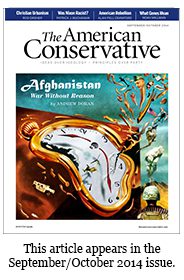Is There Capitalism After Cronyism?

Judging by the mainstream media, the most pressing problems facing capitalism are 1) income inequality, the subject of Thomas Piketty’s bestseller Capital in the Twenty-First Century, and 2) the failure of free markets to regulate their excesses, a common critique encapsulated by Paul Craig Roberts’ recent book The Failure of Laissez Faire Capitalism. These and many similar diagnoses reach a widely shared conclusion: capitalism must be reformed to save it from itself.
Exactly how this economic reformation should be implemented is a question that sparks debates across the ideological spectrum, but the idea that capitalism can be reformed is accepted by the left, right, and libertarians alike. But socio-economist Immanuel Wallerstein asks a larger question: is the current iteration of global capitalism poised to be replaced by some other arrangement? Wallerstein and four colleagues explore the answer in Does Capitalism Have a Future?
Wallerstein is known as a proponent of world systems, the notion that each dominant economic-political arrangement eventually reaches its limits and is replaced by a new globally hegemonic system. Wallerstein draws his basic definition of the current dominant system—let’s call it Global Capitalism 1.0—from his mentor, historian Fernand Braudel, who meticulously traced modern capitalism back to its developmental roots in the 15th century in an influential three-volume history, Civilization & Capitalism, 15th to 18th Centuries. From this perspective, there is a teleological path to global capitalism’s expansion, beneath the market’s ceaseless cycle of boom-and-bust.
It is today’s latest and most expansive iteration of capitalism—one dominated by the mobility of global capital, state enforcement of private rentier/cartel arrangements, and the primacy of financial capital over industrial capital—that Wallerstein and his collaborators view as endangered. Amidst the conventional chatter of social spending countering markets gone wild—as if the only thing restraining rampant capitalism is the state—Wallerstein clearly identifies the state’s role as enforcer of private cartels. This is not just a function of regulatory capture by monied elites: if the state fails to maintain monopolistic cartels, profit margins plummet and capital is unable to maintain its spending on investment and labor. Simply put, the economy tanks as profits, investment, and growth all stagnate.
Wallerstein characterizes this iteration of capitalism as “a particular historical configuration of markets and state structures where private economic gain by almost any means is the paramount goal and measure of success.”
Even those who reject this left-leaning description of free markets and the self-interested pursuit of profit can agree that the prime directive of capitalism is the accumulation of capital: enterprises that fail to accumulate capital lose it and eventually go bust. As economist Joseph Schumpeter recognized, capitalism is not a steady-state system but one constantly reworked by “creative destruction,” the process of the less efficient being replaced by the more efficient.
In Wallerstein’s view, Global Capitalism 1.0 could end in the inability of capitalists to continue reaping large and fairly secure profits. If capital can no longer accumulate more capital, this iteration of capitalism runs out of oxygen and creative destruction will usher in a radically new arrangement. Wallerstein’s chapter in this book is titled, “Structural Crisis, or Why Capitalists May No Longer Find Capitalism Rewarding.”
Though exponents of the status quo believe that amending the political-financial rules is all that’s needed to maintain the current centralized arrangement, Wallerstein believes that following the old rules will actually intensify the coming structural crisis.
Piketty’s analysis offers a ripe example of the belief that the old rules are sufficient: to Piketty, capital’s ability to expand at faster rates than the underlying economy (as measured by GDP) has lashed the tiller on a course to rising inequality, and the only way to ameliorate the resulting social instability is to redistribute the wealth via state-mandated taxes. Wallerstein and his collaborators, on the other hand, see capitalism’s ability to accumulate capital as anything but fixed—in their view, capitalism is threatened by profound changes in wage and labor structures and the global environment.
University of Pennylsvania sociologist Randall Collins fingers the displacement of human labor by information technology as the trigger for capitalism’s terminal crisis. Collins sees this inevitable trend as independent of economic and political theory and boom-bust cycles. “The structural crisis of technological displacement transcends cycles and financial bubbles,” he writes.
Collins acknowledges that the processes of financialization—roughly speaking, the commodification of all assets into tradable securities that are pyramided via leverage and exotic derivatives—have helped hollow out the economic middle, but technology’s displacement of labor is the coup de grace that could eliminate two-thirds of the educated middle class. (His back-of-the-envelope calculation is based on the dominance of the service sector in developed economies.) He rejects the commonly held optimistic view that new technologies always create more jobs than they destroy: “There is no intrinsic end to this process of replacing human labor with computers and other machines.”
Michael Mann, distinguished professor of sociology at UCLA, sees ecological crisis as the overriding threat to global capitalism. This entirely predictable crisis has an unpredictable resolution because it derives from our era’s dominant institutions of capital, the sovereign state and consumerism, having “gone global.” The other systemic threat is what Mann characterizes as “the treadmill of the nation-state’s obsession with growth.” The environmental degradation resulting from increasing consumption is jeopardizing the global system’s ability to stay on this GDP-focused treadmill. One need only glance at photos of choking smog in Beijing and New Delhi to grasp Mann’s point.
If the arrangement between the institutions of state and market changes radically enough, Mann envisions the possibility that the structural crisis “will stabilize into an enduringly low-growth capitalism,” a possibility with historical precedents such as 18th-century Britain.
But this rosy outcome ignores the book’s key thesis that the current system has no future because it has reached intrinsic limits: the returns on following the old rules are increasingly marginal. Financialization has run of out of assets to leverage into financial bubbles—what’s left to leverage? Bat guano?—the middle class that has paid for its ever-expanding consumption with rising wages is in structural decline due to the displacement of human labor by software; and the state’s ability to manage structural crises while protecting global cartel profits is being undermined, in Wallerstein’s analysis, by the ever rising costs of providing healthcare and income security and paying the external costs of environmental damage.
The old rules—inflating another credit bubble to bail out an insolvent financial sector, increasing taxes on the remaining employed, further centralizing authority and control—are no longer working. 
Wallerstein and his colleagues do not address another possible future, however, one that does more with less: an economic philosophy that rejects GDP as the arbiter of nation-state success and embraces the principles of the “degrowth movement”—décroissance in French—that is gaining adherents in the developed world. In Japan, proponents speak of the “de-generation” that is pursing degrowth, de-materialism and de-ownership: for them, advancement and success arise not from consuming more resources and capital but from using fewer resources and less capital in pursuit of a more fulfilling, lower-impact lifestyle.
Piketty and Wallerstein alike overlook Nassim Taleb’s diagnosis of what’s wrong with the current system of state-capitalism. In Taleb’s view, wealth inequality arises not from capital’s expansion but from the state’s transfer of risk from private speculation to the public sector. As the financial crisis of 2008 illustrated, the state protects financial capital from losses and inflates asset bubbles that provide outsized returns for those with access to cheap central-bank credit.
Wealth inequality is generated not by intrinsic features of capitalism—the most important of which, in Taleb’s view, is that every participant is exposed to the losses that go hand in hand with risk—but from specific state and central-bank policies that reward leveraged speculation and enable financiers to play with no skin in the game. In Taleb’s trenchant phrase, financial inequalities are “one crash away from reallocation.”
This suggests that one way to address both wealth inequality and speculative excesses is to rewrite the rules so that participants must have skin in the game. Whether this is possible in an era of regulatory capture by the very financiers the rules aim to corral is an open question. Wallerstein’s school, like Piketty, also overlooks the transformative power of the factors Giovanni Arrighi—another disciple of Braudel and author of The Long Twentieth Century—identifies as the key drivers of capital accumulation: attracting entrepreneurs and mobile capital.
What could replace the current iteration of global state-capitalism? If we assemble these three potentially transformative dynamics—degrowth, the recoupling of risk and loss, and entrepreneurial mobile capital—we discern a new and potentially productive teleological arc to global capitalism, one that moves from a capitalism based on financial hyper-centralization and obsession with rising consumption to one focused on more efficient use of resources and capital via decentralization and localized innovation.
Rather than ask if such a “think globally, profit locally” alternative is possible, we might ponder the sobering conclusion that Global Capitalism 1.0 will be replaced with some new arrangement one way or another, and we might as well try for the most efficient, adaptive, and sustainable decentralized model rather than go down with the statist-steered ship.
Charles Hugh Smith is the author of An Unconventional Guide to Investing in Troubled Times and writes at OfTwoMinds.com.
Comments